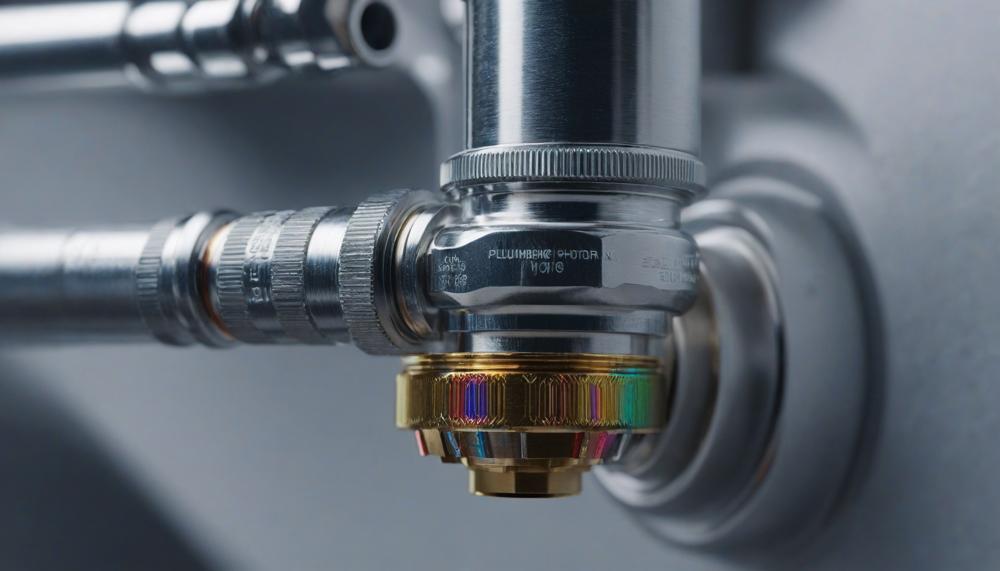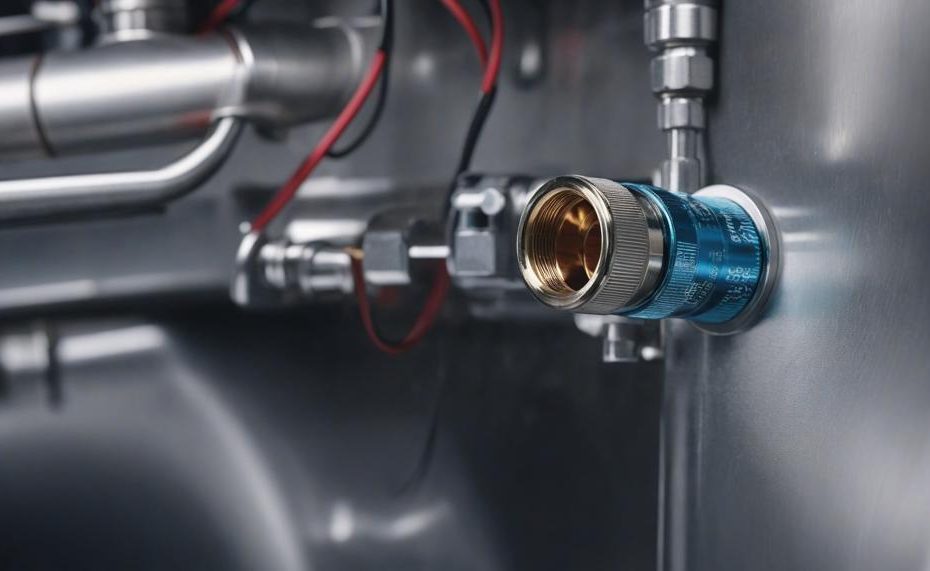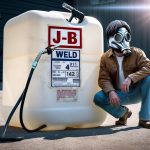Welcome to the intriguing world of plumbing essentials, where today’s topic delves into a question that might tickle the curiosity of both seasoned DIY enthusiasts and professional plumbers alike: Can Plumbing Solder Go Bad? Often tucked away in toolboxes or sitting on shelves, this unsung hero of leak-free connections might just hold more surprises than you expect.
In this article, we’re not just going to scratch the surface; we’re diving deep into the heart of plumbing solder—what it is, how it’s used, and the factors that could lead to its decline in performance. Whether you’re patching up a tiny leak or overhauling your entire bathroom, understanding the condition of your solder is key to a successful fix.
Here’s what we’ll cover:
- The Basics: What is plumbing solder, and why is it so crucial in plumbing projects?
- Shelf Life: Exploring the concept of solder ‘going bad’ and the science behind it.
- Signs of Age: How to identify if your solder has lost its mojo.
- Storage Smarts: Tips for keeping your solder in tip-top shape for as long as possible.
- Fresh vs. Fossilized: The impact of using outdated solder on plumbing integrity.
Join us as we unravel the mysteries behind plumbing solder and ensure your plumbing projects are not just a temporary fix but a long-lasting solution.
Contents
- 1 Signs of Deteriorating Plumbing Solder
- 2 Factors That Contribute to Solder Degradation
- 3 How to Identify Bad Plumbing Solder
- 4 The Impact of Bad Solder on Plumbing Systems
- 5 Common Causes of Solder Failure
- 6 Preventive Measures to Avoid Bad Solder
- 7 Repairing or Replacing Bad Plumbing Solder
- 8 Expert Tips for Maintaining Solder Integrity
- 9 Understanding the Lifespan of Plumbing Solder
- 10 Conclusion
Signs of Deteriorating Plumbing Solder
When it comes to maintaining your home’s plumbing system, being vigilant about the condition of plumbing solder is crucial. This metal alloy, essential for connecting and sealing pipes, can deteriorate over time due to various factors. Here’s what homeowners should keep an eye on:
| Sign | Description | Cause |
| Corrosion | Metal appears eaten away, with potential greenish or white deposits. | Moisture exposure, chemical reactions. |
| Discoloration | Unnatural colors like green, black, or brown on the solder. | Oxidation, chemical exposure, and temperature changes. |
| Visible Cracks or Gaps | Small fissures or clear separations in the soldered joints. | Improper installation, stress from water pressure or temperature fluctuations. |
| Leakage | Water dribbling or spraying from soldered connections. | Weak bonds due to poor solder quality or application technique. |
| Soft or Brittle Texture | Solder feels too soft or crumbles easily when prodded. | Ageing, incorrect solder mix (e.g., too much lead), or exposure to high temperatures. |
To thwart these issues from escalating into full-blown leaks or blockages, it’s wise to perform regular maintenance checks on your plumbing systems. Key practices include using high-quality solder designed for your specific types of pipes and fittings, ensuring proper storage of solder materials away from extreme temperatures and moisture, and applying correct installation techniques—like thoroughly cleaning pipes before soldering.
Regular inspections by professionals can spot early signs of trouble, preventing a stitch in time from becoming nine. Remember, neglecting these warning signs could lead you down the road to costly repairs or significant water damage.
Factors That Contribute to Solder Degradation
The durability of plumbing solder is pivotal for maintaining the integrity of a plumbing system. Over time, solder can degrade due to several factors, leading to leaks and potentially significant water damage. Understanding these factors is crucial for prevention and timely intervention. Here’s a breakdown of the primary culprits behind solder degradation:
| Factor | Description | Preventive Measures |
| Moisture and Oxygen Exposure | Continual exposure to moisture and oxygen can initiate corrosion, weakening the solder. | Ensure proper insulation of pipes and regular checks for moisture accumulation. |
| Low-Quality Solder/Materials | Using inferior solder or facing impurities in the water can accelerate degradation. | Opt for high-quality solder specifically designed for the application and type of pipes used. |
| Corrosive Chemicals/Minerals | The presence of harsh chemicals and minerals in the water supply can corrode solder over time. | Consider water treatment solutions to neutralize harmful components before they contact soldered joints. |
| Improper Installation Techniques | Lapses in installation, like not cleaning pipes or using mismatched solder types, compromise joint integrity. | Meticulous adherence to correct installation protocols and regular professional inspections. |
| Extreme Temperatures | Solder may melt or expand under high temperatures, while low temperatures cause contraction, stressing the joints. | Avoid exposing plumbing to temperature extremes through adequate insulation and climate control measures. |
| Lack of Maintenance | Neglecting regular inspections and maintenance can allow small issues to escalate into significant problems. | Schedule routine plumbing inspections and address any signs of wear immediately to prevent deterioration. |
In essence, the longevity of plumbing solder hinges on selecting quality materials, adhering to best installation practices, protecting plumbing from environmental stressors, and committing to regular maintenance. Spotting early signs of degradation—like discoloration, cracks, or gaps—is essential in averting more severe issues down the line.
How to Identify Bad Plumbing Solder
Identifying bad plumbing solder is critical to ensure strong, leak-free joints in your plumbing system. Here’s how you can tell if the solder you’re planning to use or have used is not up to the mark:
| Visual Inspection | Examine the solder joint closely. If the solder appears cracked, has holes, or seems inadequately filled around the joint, it’s a sign of poor quality. Good solder should look smooth and shiny with a uniform finish. |
| Leakage | The most telling sign of bad solder is leakage. If water seeps through the joint, it’s a clear indication that the solder has failed to create a watertight seal. |
| Age and Storage | Consider the age of the solder or the soldered joint. Solder that’s past its expiration date or has been stored under poor conditions (excessive humidity, temperature fluctuations) might have deteriorated, leading to weak bonds. Always store solder in a cool, dry place away from sunlight. |
| Composition | Check the ratio of tin to lead in the solder. A higher tin content generally means a stronger joint. Lead-based solders have shorter shelf lives and can be more prone to going “bad.” |
| Expiration Date | Always verify the expiration date on your solder packaging before use. Using expired solder can result in weak joints that are susceptible to leaks. |
Remember, always opt for quality solder from reputable brands and store it properly to extend its lifespan.
The Impact of Bad Solder on Plumbing Systems
Bad solder can severely undermine the performance and durability of plumbing systems, leading to a myriad of problems ranging from minor leaks to significant water damage. Understanding the impact requires delving into specifics:
| Aspect | Impact of Bad Solder | Explanation |
| Leakage | High Risk | Poor-quality or improperly applied solder fails to create a watertight seal, allowing water to escape through joints. |
| Corrosion | Accelerated | Bad solder may react chemically with the pipe material, speeding up corrosion and reducing the system’s lifespan. |
| System Integrity | Compromised | Inferior solder joints are weaker, making them prone to breakage under pressure or due to thermal expansion. |
| Repair Costs | Increased | Frequent leaks and failures necessitate more repairs or complete overhauls, driving up maintenance costs. |
| Water Quality | Potentially Affected | Certain solders contain lead or other harmful substances that could leach into the water supply. |
| Efficiency | Reduced | A compromised system may require more energy to maintain water pressure, affecting overall efficiency. |
To dodge these woes, it’s crucial to choose high-quality solder from reputable brands and apply it correctly. Always bear in mind that the right solder, stored under optimal conditions and used within its shelf life, will save you a heap of trouble down the line. Poorly chosen or outdated solder not only jeopardizes the plumbing infrastructure but also poses risks to health and safety through potential water contamination.
Common Causes of Solder Failure
The most common factors leading to plumbing solder failure can be traced back to a few critical areas: exposure to harsh conditions, flawed installation practices, and material degradation. Let’s break it down in a table for clear understanding:
| Factor | Explanation | Preventive Measures |
| Exposure to Heat and Moisture | Constant exposure to moisture can significantly weaken the solder, causing it to deteriorate over time. This results in weakened joints that are prone to leaks. | Ensuring proper insulation of pipes and using solder materials that are suited for the specific environmental conditions. |
| Poor Installation Techniques | Incorrect application methods, such as failing to clean the pipes thoroughly before soldering or not heating the solder to the correct temperature, can lead to weak joints. | Adhering strictly to best practices for soldering, including thorough cleaning, correct heating, and using the right tools. |
| Corrosion and Material Degradation | Low-quality solder or water impurities can accelerate corrosion, compromising the integrity of the soldered joints. Over time, this leads to failure. | Opting for high-quality solder from reputable sources and considering water treatment options if impurities are a concern. |
| Extreme Temperatures | Solder exposed to temperatures beyond its threshold can either melt or become brittle, leading to failure of the connection. | Selecting solder materials designed to withstand the temperature ranges expected in their specific application environments. |
By understanding these factors and implementing the recommended preventive measures, one can significantly reduce the risk of plumbing solder failure. Regular maintenance and inspections play a vital role in identifying early signs of trouble, such as discoloration, cracks, or gaps at connections.
Preventive Measures to Avoid Bad Solder
To dodge the mishaps of bad plumbing solder and secure a strong, enduring bond, embracing a mix of savvy practices and preventive care is the ticket. Let’s dive into the specifics, shall we?
Choose Quality Materials
First off, picking top-notch solder and flux for the job is non-negotiable. Skimping here is like shooting yourself in the foot – you’re setting up for trouble.
Proper Preparation
Cleaning is king. Ensure pipes and fittings are spotless before soldering. A bit of grime or oxidation can wreck the bond faster than you can say “leak”.
Right Technique
Getting the heat just right and applying solder evenly is an art form. Too little, and it won’t hold; too much, and you’ve got a mess.
Regular Maintenance
Routine check-ups by a pro keep things ticking over nicely. Catching issues early saves a world of hurt (and cash) down the line.
Educate and Prevent
Teaching everyone in your castle about what not to chuck down the drains goes a long way. Also, those hair catchers in showers? Gold.
Water Quality Control
Hard water is a silent pipe killer. A water softener can be a knight in shining armor here, protecting your plumbing from scale buildup.
Repairing or Replacing Bad Plumbing Solder
Identifying and rectifying a botched plumbing solder job requires a keen eye and a steady hand. It’s not just about slapping some solder on the pipes and calling it a day.

Here’s how to suss out the duds from the studs in the world of plumbing solder and get your pipes back to tip-top shape.
Spotting Bad Plumbing Solder
- Discoloration: Good solder should be shiny and smooth. If you spot any discoloration or dullness, that’s your first clue something’s amiss.
- Cracks or Bubbles: These are tell-tale signs of a rushed job or expired materials. Cracks and bubbles in the solder can lead to leaks faster than you can say ‘drip’.
- Weak Joints: Give the joint a gentle wiggle. Feeling any movement? That’s bad news. A robust solder joint won’t budge an inch.
Best Practices for Repair and Replacement
| Inspect | Before diving in, assess the damage. Is it localized or widespread? | This dictates whether to repair or replace. |
| Clean | For minor fixes, cleaning the joint with a wire brush can prepare it for re-soldering. | Removal of old solder is key to a clean, solid joint. |
| Heat | Apply heat evenly around the joint for optimal flow. | Avoid overheating, as this can damage the pipe. |
| Apply Fresh Solder | Use quality, fresh solder for repairs, ensuring it melts and flows freely. | This seals any gaps or cracks effectively. |
| Replace | If a repair won’t cut it, replacing the section of pipe is your best bet. | Ensure you use fresh solder and follow proper technique for a lasting fix. |
Remember, when in doubt, consult with a pro. Fixing a dodgy solder job is not just about patching up; it’s about restoring integrity to your plumbing system. Always opt for trusted brands of solder and keep your stash in a cool, dry place to prevent premature aging.
Expert Tips for Maintaining Solder Integrity
Proper maintenance techniques can significantly impact the longevity and efficacy of plumbing solder, preventing it from deteriorating over time. Here’s how these practices contribute:
| Regular Inspections | Conducting routine checks on your plumbing system helps spot early signs of wear or potential issues, allowing for timely intervention before minor problems escalate. |
| Quality Materials | Opting for high-quality solder tailored to your plumbing needs ensures a better bond and reduces the risk of premature failure. |
| Cleanliness is Key | Thoroughly cleaning pipes and fittings before soldering removes impurities that could hinder adhesion, ensuring a stronger joint. |
| Correct Solder Type | Choosing the right solder, such as silver solder for high-temperature applications, ensures the joint can withstand the conditions it will face. |
| Avoid Extreme Temperatures | Protecting soldered joints from extreme heat or cold prevents melting and cracking, preserving the integrity of the connection. |
| Monitor for Corrosion | Regularly checking for signs of corrosion and addressing them promptly can prevent further deterioration and leaks. |
| Immediate Issue Resolution | Acting swiftly to repair any detected faults prevents compounding problems, saving time and expense in future repairs. |
By adhering to these maintenance strategies, you can extend the life of your plumbing solder, ensuring robust and leak-free connections that stand the test of time.
Understanding the Lifespan of Plumbing Solder
The resilience of plumbing solder, essential for ensuring watertight connections in plumbing systems, can be undermined by several factors. These elements not only shorten the lifespan of plumbing solder but also compromise the functionality and reliability of plumbing systems. Let’s delve into these factors and their potential impact.
Factors Leading to Deterioration
- Moisture and Oxygen Exposure: The archenemies of solder, moisture, and oxygen team up to incite corrosion. This relentless process gradually eats away at the solder, weakening its structural integrity over time.
- Low-Quality or Improper Solder: Just like a chain is only as strong as its weakest link, a plumbing system’s durability hinges on the quality of its solder. Inferior or incorrect solder can be prone to failure, leading to leaks that threaten the system’s functionality.
- Improper Installation Techniques: A solder joint isn’t just about melting and joining; it’s an art that demands precision. Skimping on pipe cleaning or mismatching solder types can lead to weak joints that are liabilities rather than assets.
- Extreme Temperatures: Plumbing isn’t just about water flow; it’s a battle against temperature swings. Extreme heat can cause solder to soften or even melt, whereas freezing conditions can lead to expansion and contraction, stressing the joints.
- Neglect: Like a garden needs tending, plumbing systems require regular checks. Ignoring maintenance or failing to promptly address visible signs of wear and tear can escalate minor issues into major headaches.
Conclusion
As we navigate the intricate rivers and tributaries of our plumbing systems, the role of solder—a silent sentinel guarding against leaks and ensuring seamless connections—cannot be overstated. This comprehensive exploration into whether plumbing solder can go bad has unveiled a trove of insights that are as crucial for the weekend DIYer as they are for the seasoned professional plumber.
The journey through understanding solder’s shelf life, identifying signs of deterioration, and embracing best practices for storage and use illuminates a clear path: vigilance, quality materials, and proper technique are paramount. Like a ship’s hull must be watertight to prevent the ingress of water, so too must our soldered joints be impeccably sealed to ward off leaks and maintain the integrity of our plumbing infrastructures.
Corrosion, discoloration, cracks, or gaps signal a breach in our defenses, inviting trouble waters that could lead to costly repairs or significant damage. Yet, armed with knowledge on preventive measures—choosing high-quality materials, mastering soldering techniques, regular maintenance checks—we can steer clear of these pitfalls.
Remembering that poor or outdated solder is not just an inconvenience but a potential hazard to both infrastructure and health underscores the importance of diligence. Just as one would not set sail with weathered sails or frayed ropes, we should not rely on compromised solder to secure our plumbing systems.
In conclusion, while plumbing solder can indeed “go bad,” understanding the factors at play empowers us to make informed decisions. By selecting quality materials suited for specific applications, adhering to best installation practices, protecting against environmental stressors, and committing to regular upkeep, we ensure our plumbing systems remain robust fortresses—impervious to the elements they contend with daily. Let this be your guide: vigilant maintenance coupled with an unwavering commitment to quality is your compass towards long-lasting plumbing integrity.





